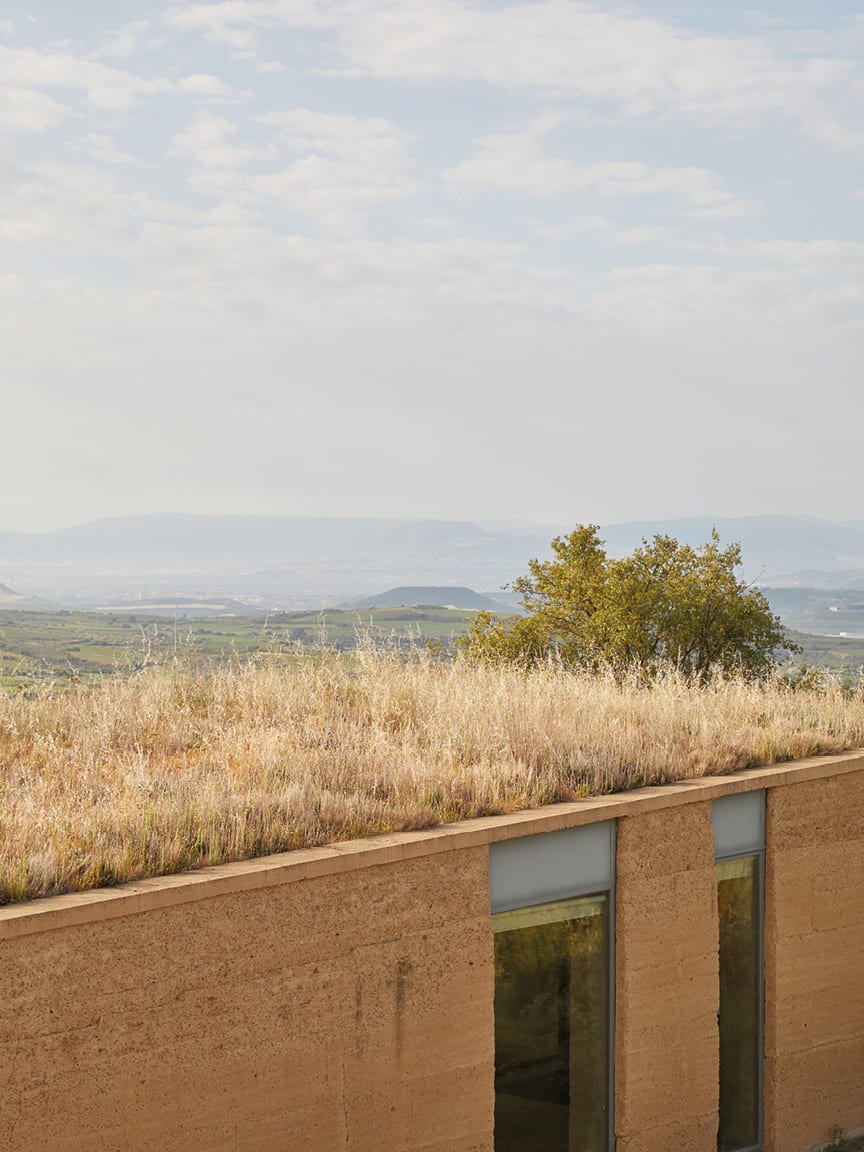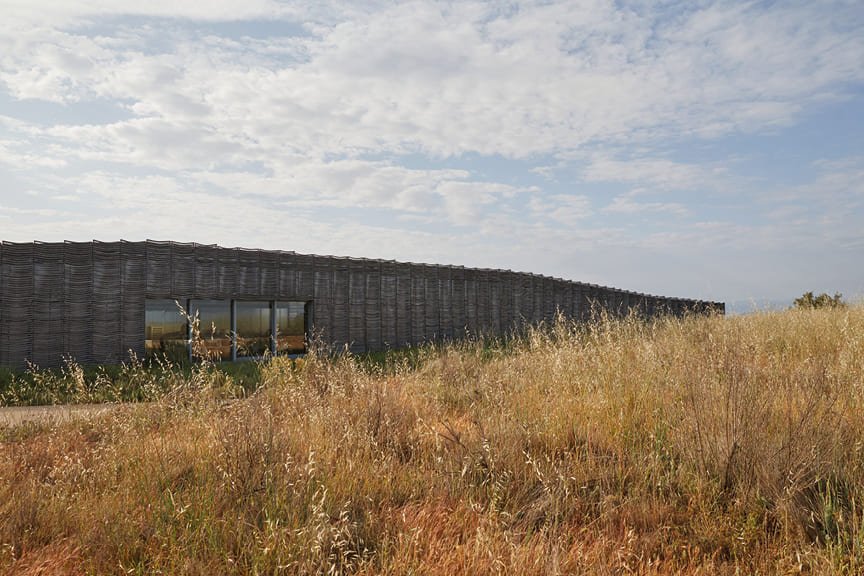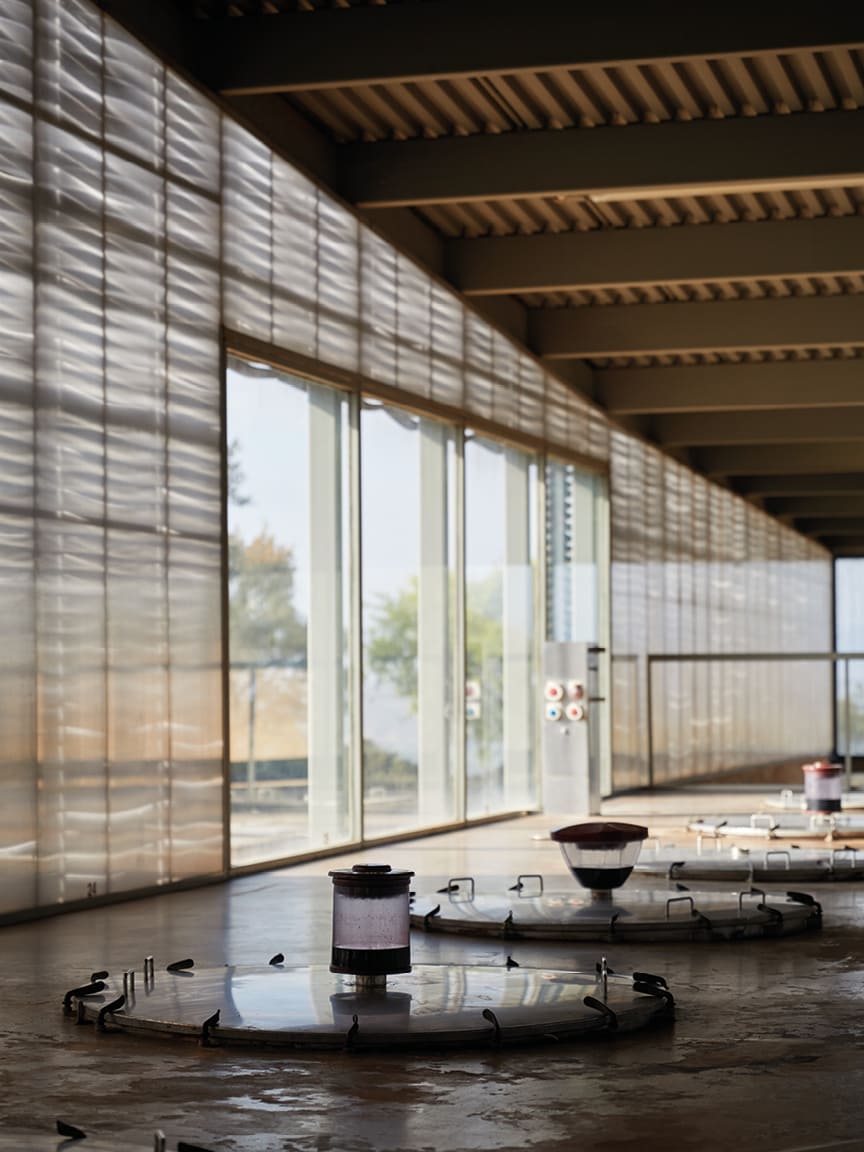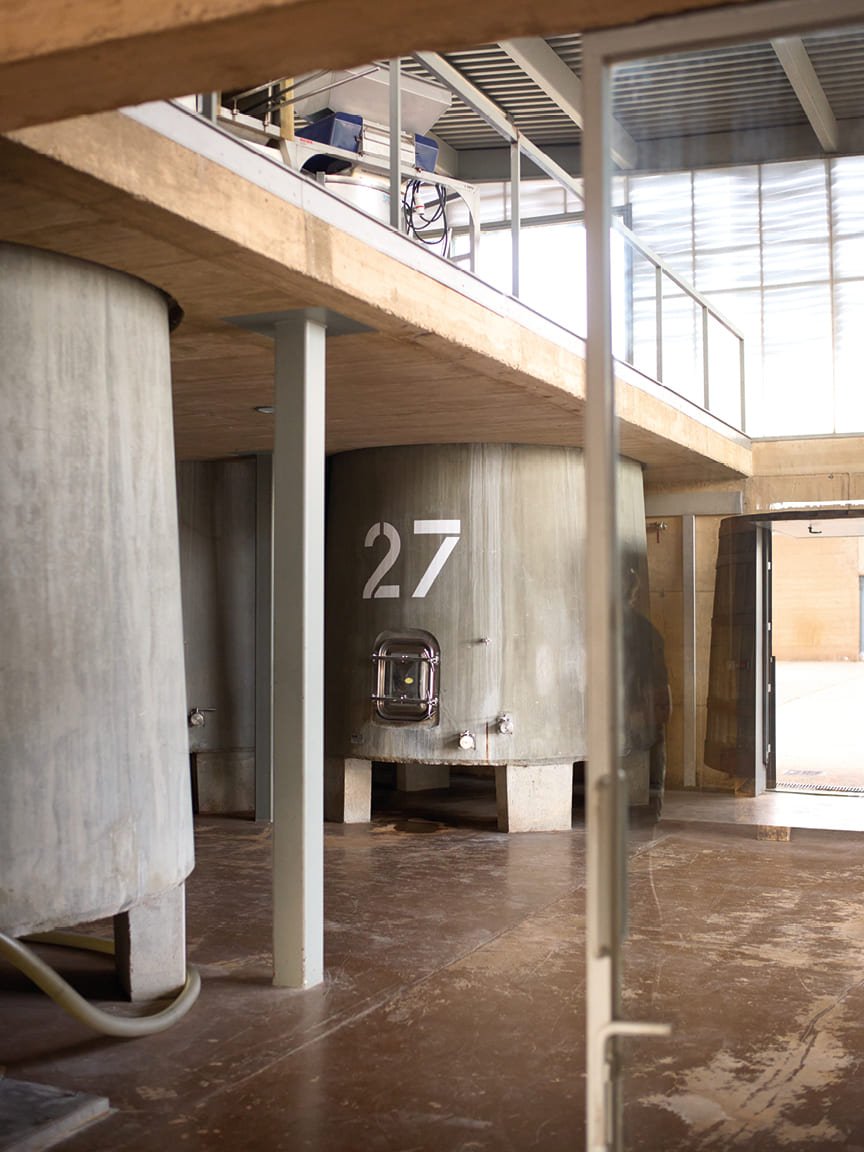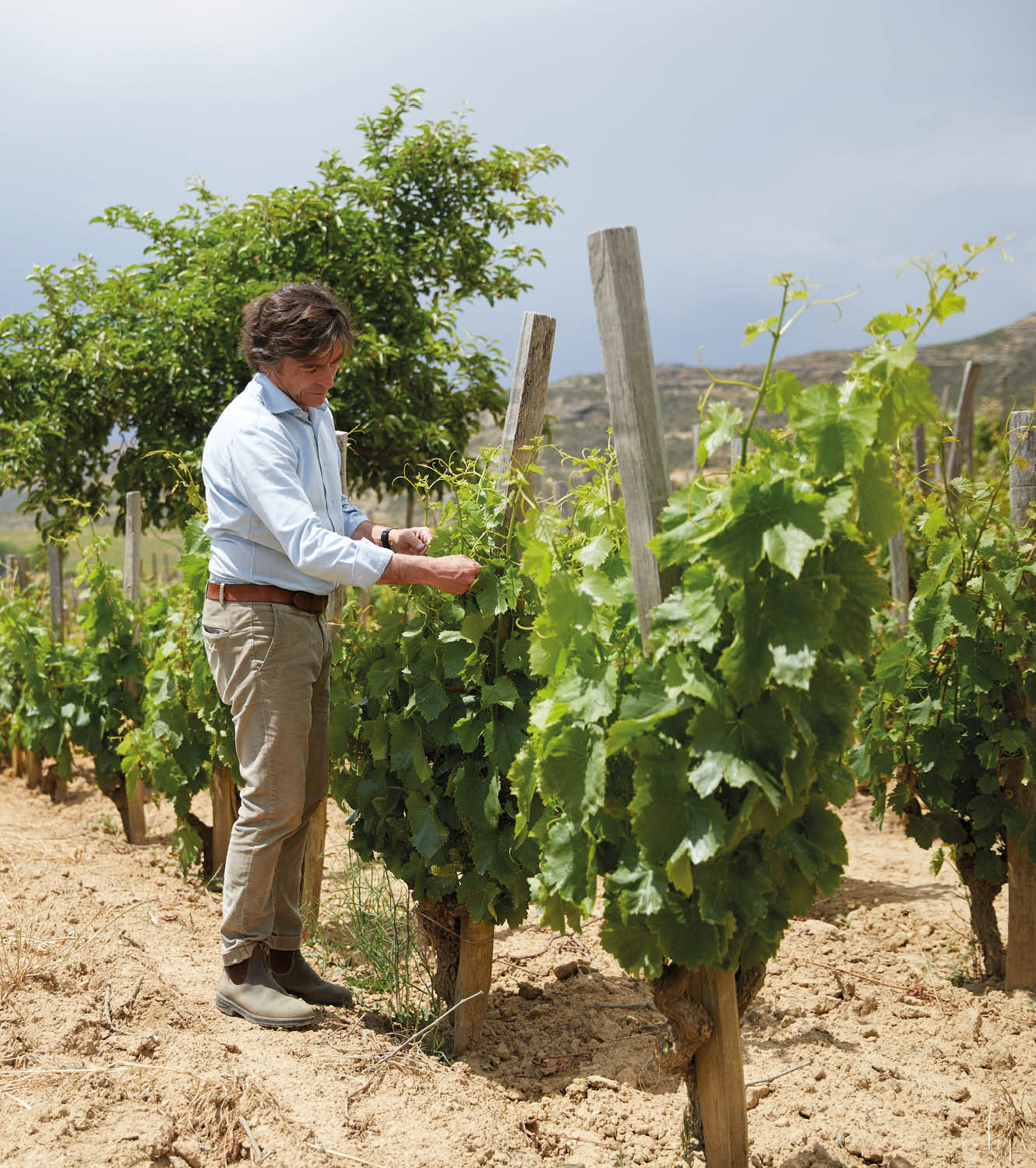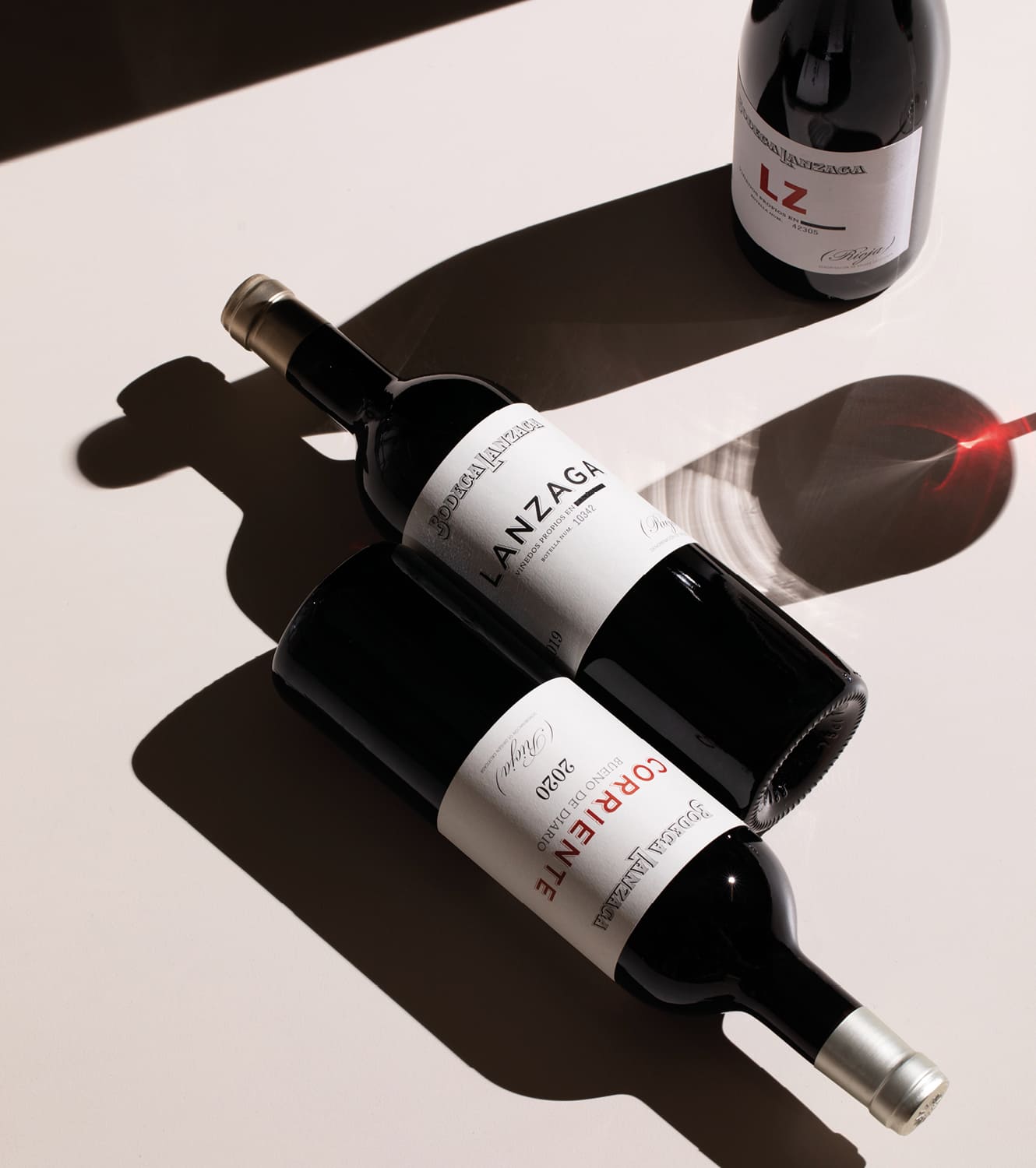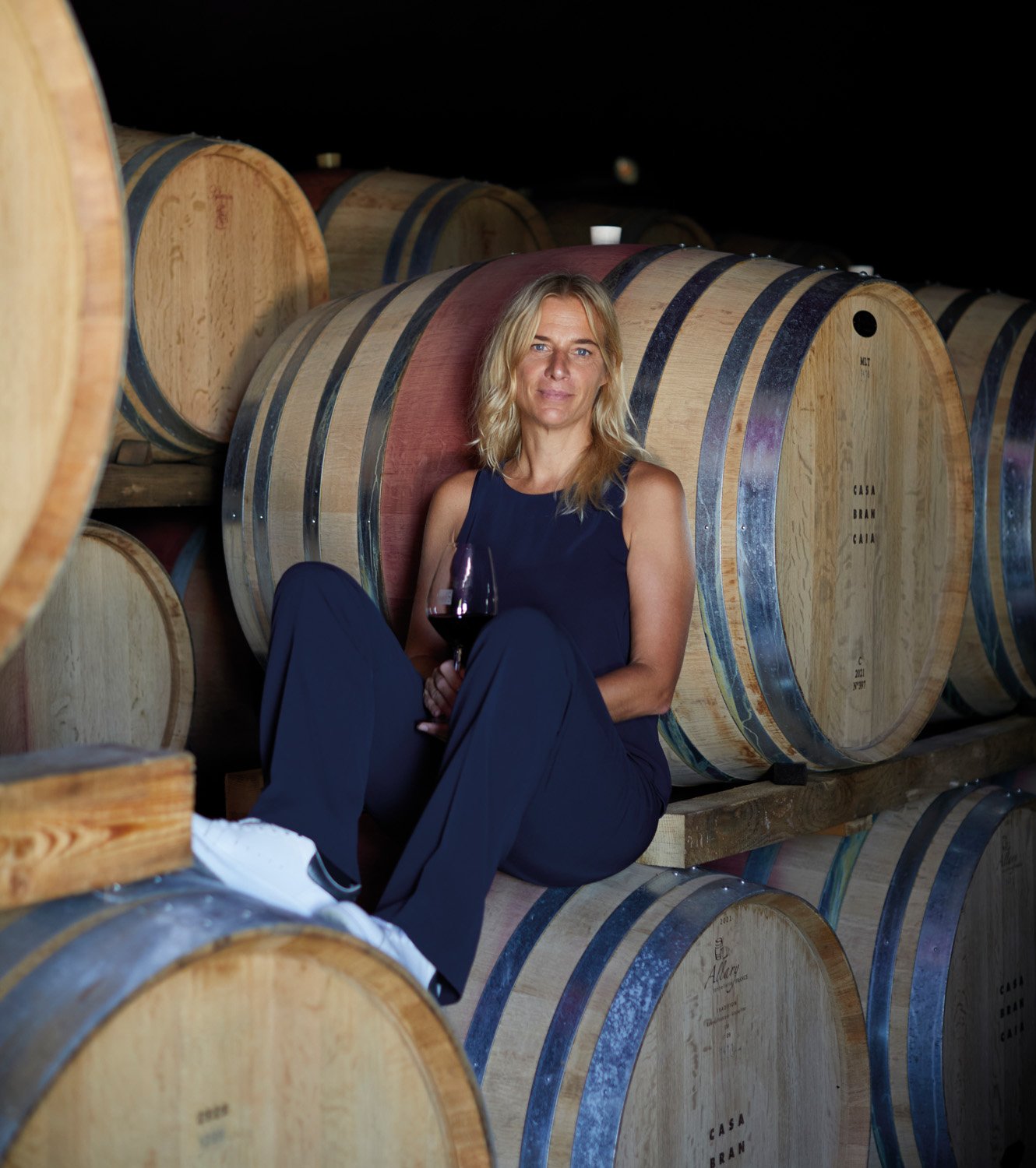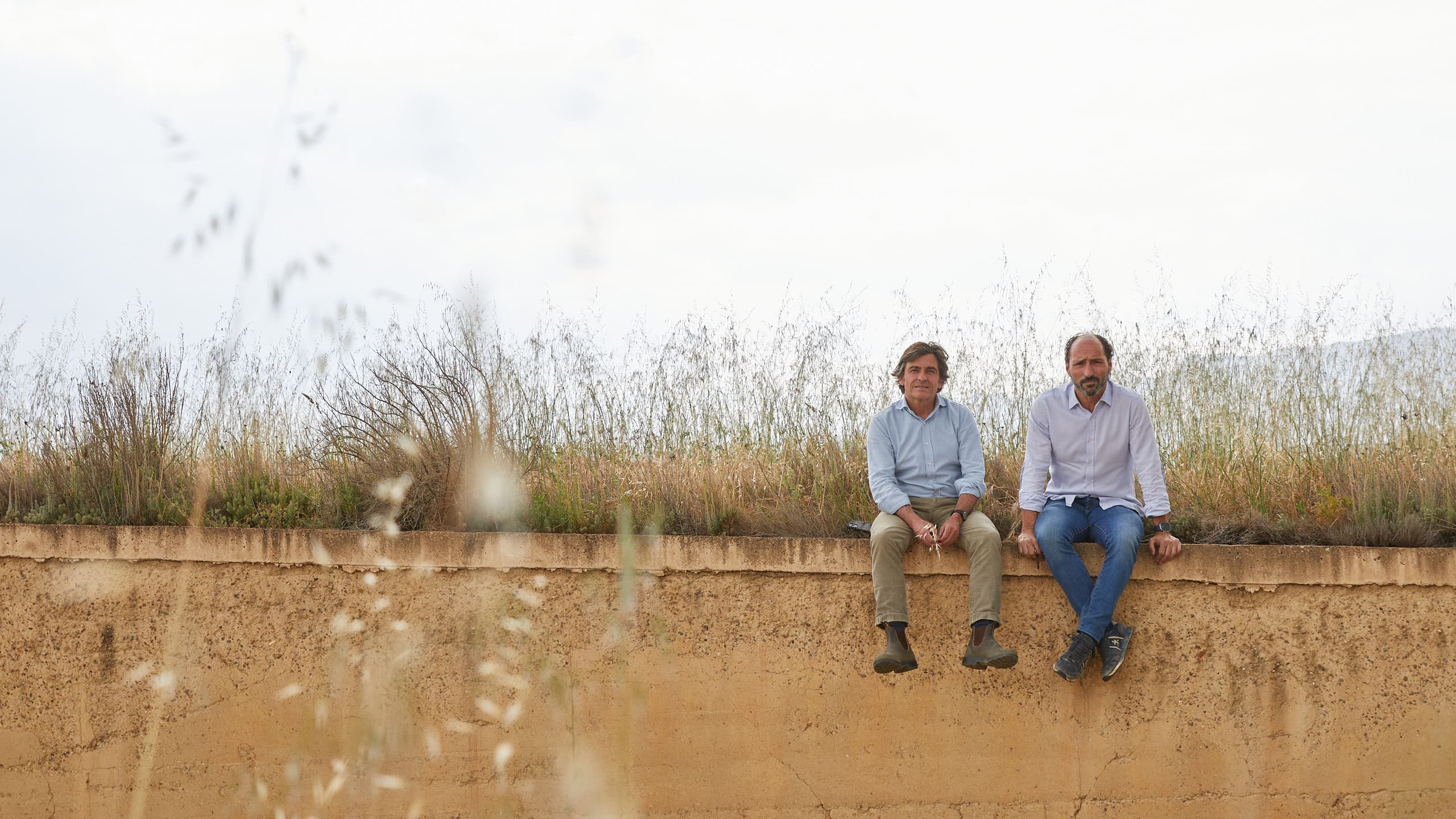
REBEL WITH A CAUSE
Winemaker extraordinaire Telmo Rodríguez has helped redefine Rioja with his unique terroir-focused village wines, as Nargess Bank discovers
“I love to be an outsider and go against the establishment,” says Telmo Rodríguez as we start wrapping up. The winemaker and co-owner of Bodega Lanzaga is quite the raconteur. We’ve been chatting for almost two hours, covering topics as wide and wild as 17th-century winemaking, mingling among Madrid’s artistic circles, working on the avant-garde Matador magazine, surfing, and Spain’s reawakening. “This is an amazing moment for Spain. The talent, ambition and revolution are there. They speak of Spain as a sleeping lion, and today the lion is awake. We are full of energy to make amazing wines.”
Telmo is at the vanguard of a radical movement in Rioja steadfast in making wines that are an entirely original expression of place. Their mission is to reshape the definition of Rioja, liberating it from its commercial status. His flagship winery, Bodega Lanzaga, has a singular vision: to make village wines, meaning small-parcel, small-production, terroir-focused bottlings for wines with real individuality that authentically reflect the true essence of Rioja.
To do so, Telmo and his business partner Pablo Eguzkiza – a disciple of Jean-Claude Berrouet of Pétrus – have looked back in time to imagine the future. They have studied winemaking in the 17th and 18th centuries, when the custom was to make wine village by village, in small plots and according to the micro land and climate. Their approach has been to adopt the best of ancient methods and marry these with innovation. Lanzaga’s collection has been winning accolades, but it’s taken over 30 years of painstaking research of land, grapes and method to reach this place.
“I like this idea of restoring, listening to a place, to a vineyard, a landscape. Every place is different, and every place will tell you something different, so we work with different grapes, and plant trees depending on the place. As a winemaker, I would never go to a place and try to tell it how it should taste,” he continues.
“I prefer to ask the place: how should you taste? And all our wines, in the different sites, vineyards and villages, are different. Because we learn to be sensitive and respect the place. Our work is about asking, not imposing. I’m always surrounded with people more talented than me. The art is to listen. To have the ambition to be better,” he says, then adds after a pause. “When you learn to see and listen, you are less pretentious.”


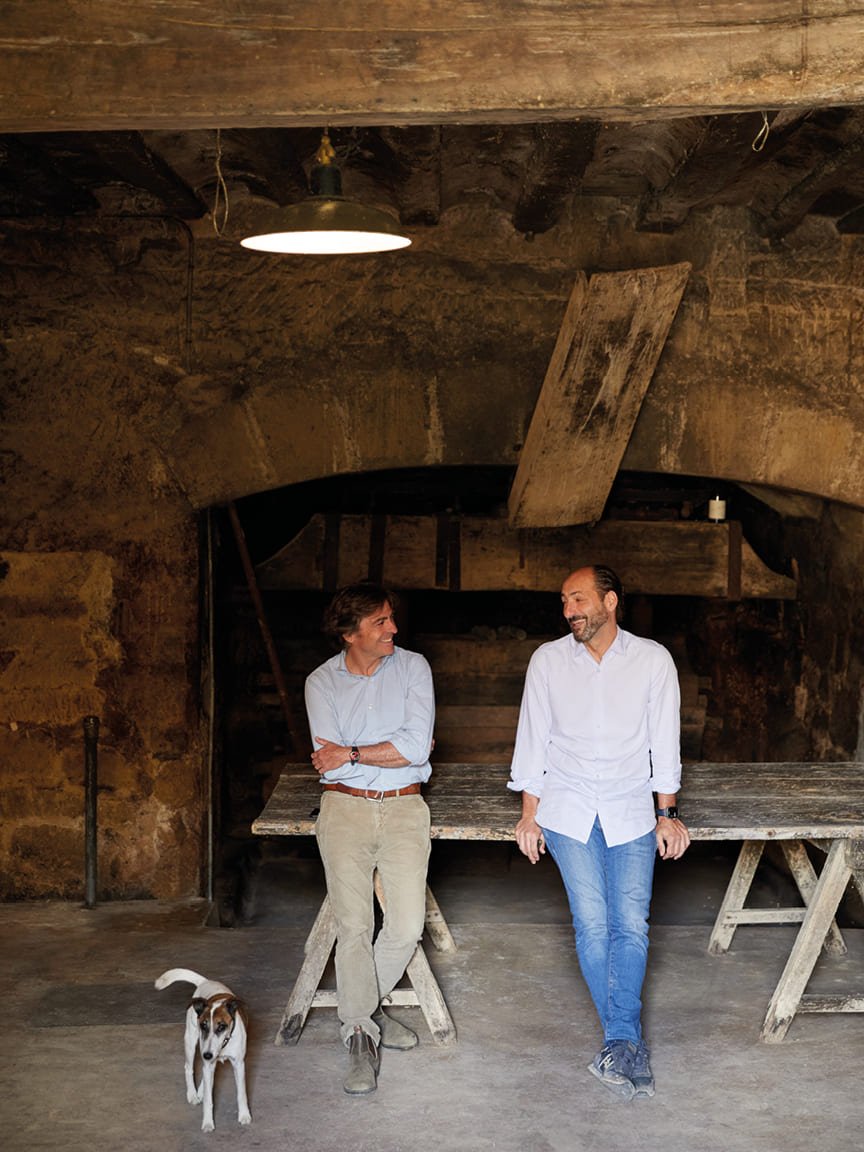
The Lanzaga winery and vineyards are located to the south of Bilbao in northern Spain. Telmo Rodríguez with his business partner, the winemaker Pablo Eguzkiza
THE NON-CONFORMIST
Telmo was raised within an artistic family, and his childhood was anything but ordinary. His entrepreneur father and artist mother had purchased the completely crumbling historical 14th-century Remelluri estate in Rioja on a whim, albeit a passion-driven one. They were new to the area and had no knowledge nor any intention of making wine. But the place spoke to them, and they instinctively knew winemaking was to be their calling. Telmo offers this explanation: “The beauty brought them to Remelluri, but then the place felt so connected to wine they decided to make wine. There was a certain energy to the place.”
Telmo too listened to his heart when he quit biology to study oenology in Bordeaux. This followed years in France gaining hands-on experience at some of the most famed estates before settling in the Rhône Valley to work with growers. “I wasn’t interested in working at a famous winery. I wanted to work with real people.”
The young Telmo returned to Spain intent on following his own mission. It was the early 1990s and wine had increasingly gone under the control of big corporations and cooperatives, leaving little or no room for the culture of small wineries. “Progress was seen as the future, for me the future was to work with the past.” In Spain Telmo discovered a country with incredible land that no one was visiting, and forgotten vineyards and grapes that no one appeared to be interested in. “I was a surfer. You know the dream of a surfer is to ride the wave that no one else has,” he muses.
In 1994, under the banner of the Compañia de Vinos Telmo Rodríguez, Telmo and Pablo went on a journey to explore and restore neglected old vineyards all around Spain’s classical wine regions. They hired young local oenologists, made a simple wine with them in order to better understand the grapes, land and microclimates, then sourced exceptional vineyards to create top bottlings.
Brimming with knowledge and with an even more profound respect for traditional styles of viticulture and winemaking, in 1998 the duo returned to Rioja and set the foundations for Lanzaga. Their ambition from the start was to make a wine “de pueblo,” a village wine modeled on centuries-old traditions, with many smaller properties that have only 15 to 20 hectares of vineyard each, teamed with 20th-century innovations. The concept was deeply radical.
I ask about the roots of his fascination with the past. “The village of Lanciego in 1680, for example, had 330 growers and 260 cellars. In all our classic literature, Don Quixote and so on, when they talk about wine, they talk about villages. The culture was already there. And it’s so beautiful.” Telmo recalls a journalist asking him back then where is the next place to discover in Spain, and he, being the provocateur, replied: Rioja. “They couldn’t understand since the area was already known so I said: no one knows the internal Rioja, the great Rioja, the beautiful Rioja, which is related to villages, to sites, to history.”
Lanzaga settled in the village of Lanciego, in the subzone of Rioja Alavesa, an area also historically defined by individual grower-makers. They chose the area for its beauty, contrasting climate, the wild mix of Atlantic, Mediterranean, olive trees, and vineyards. “We started slowly. We never had much money but had a lot of talented people.” His mother often advised him that having less money has the benefit of allowing for more freedom to be explorative and take risks.
Initially Lanzaga operated from what Telmo laughingly described as a very ugly place. All the funds went to purchasing perfectly situated beautiful vineyards and exploring winemaking using various grapes. “Our mission was to talk about making this village wine Rioja, not to impress with grand architecture, but I also knew we needed to build a nice space for our team.”
And so, the Bodega Lanzaga winery was finally built in 2007 with the help of architects and old surfer friends Diego Garteiz and Paul Basañez. Telmo refrained from making a spectacular winery, insisting on a modest building to resemble an old cellar using age-old methodology, local earth, so that it would merge with its surroundings. It wasn’t an easy task, but the winery was completed using earth, iron and the staves of old barrels.
“My parents instilled in me the spirit of adventure. They found Remelluri, I was going to find some of the most beautiful vineyards of Spain,” reflects Telmo. “The journey took us 30 years. Our ambition was never to have the biggest winery and make a lot of money but produce the best wine in the world. It’s not a bad ambition, right,” he laughs, adding: “But we wanted to achieve that by doing something small, creating a new model.”
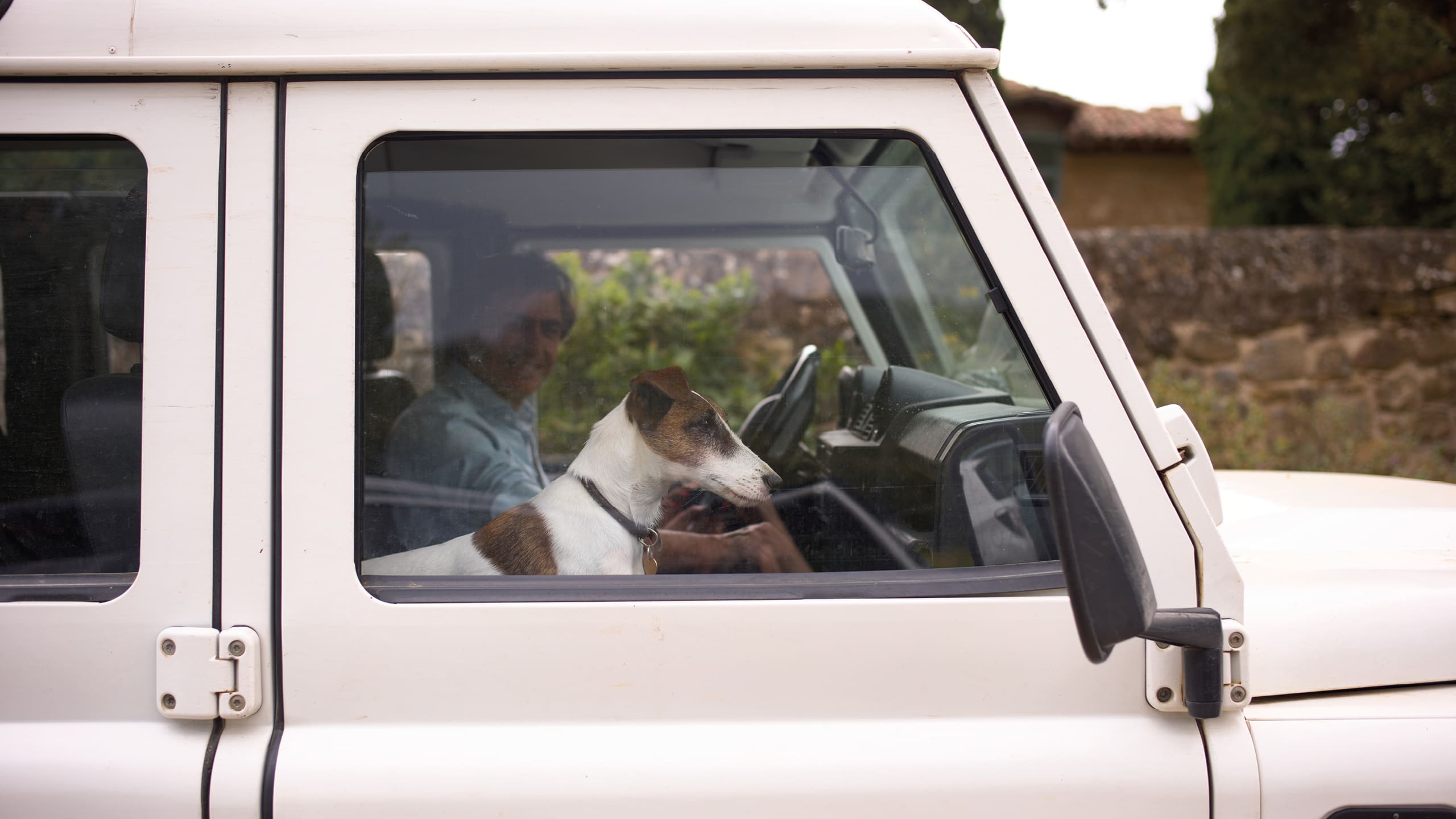
Telmo Rodríguez with his dog
LAY OF THE LAND
The Bodega Lanzaga’s 30 hectares of vineyards in and around the villages of Lanciego and Labastida are farmed organically and the estate sources additional grapes from principled local farmers for its Corriente bottling. The Lanzaga vineyards are 500 to 700 meters above sea level, with a mix of old and new vines which are all head-trained, made up of primarily Tempranillo, Graciano, and Garnacha, though Telmo estimates there may be eight or more native varieties interplanted around his estate. The soils here are clay/calcareous, commonly associated with Rioja Alavesa, with outcroppings of sandstone and marl. In the cellar, all the wines are fermented spontaneously, and the estate employs a mix of concrete tank, 1,200-liter foudres, and barriques for fermentation and aging.
Lanzaga only makes wines from specific single plots. Radically, the estate rejects Rioja’s more common system of labeling wines according to their aging – Crianza, Reserva, Gran Reserva. Instead, the bottlings follow a more Burgundy-style, terroir-based model with three “village” wines and four “cru” wines.
Telmo is convinced the Rioja labeling system, which favors larger producers, is outdated. “The model means 400 million bottles called Rioja,” he remarks while shaking his head furiously. He compares it to Shiraz from Australia, or Sauvignon Blanc from New Zealand, which are easy-to-read, generic models that may sell bottles, but instead of allowing the best wines to express a country, encourage the worst to do so. “Rioja became an empty brand; too generic.” He says it’s a little like calling Spain a country of only sun, sandy beaches and paella, while omitting Velázquez, Goya, Picasso, Buñuel, Dalí...
“A Rioja that became a lover without substance is a dead Rioja.”
Lanzaga makes three wines: Lanzaga, LZ and Corriente – all pristine, powerful, age-worthy, and expressive wines that speak of where they come from and are therefore full of character and nuances. Lanzaga is the flagship bottling, a field blend from estate vineyards – top selections from 35 different plots of organic vineyards with various soil compositions – and, according to Telmo, “the backbone of our project, the identity, the purest expression of our work in Lanciego.”
Built in 2007 in the village of Lanciego, the Bodega Langaza winery was designed to be a modest building resembling an old cellar. The architects, Diego Garteiz and Paul Basañez, used age-old methodology and local earth to merge it with its surroundings
NEW TASTES
The modern wine consumer, I suggest, tends to be more adventurous, certainly more curious in knowing the story, which is all in his favor. He nods rapidly in agreement. He is aware that fine wine is a small segment in the pyramid that makes up wine. Spain, he notes, is lucky in that it has an abundance of beautiful vineyards and so he is able to make great quality fine wine at an agreeable price.
I probe about the future, curious to know if Telmo and Pablo are planning new wines. “We’re a little bit at the end of our working life,” he says pragmatically, noting how proud he is of his son joining the family business. “We remain ambitious to improve what we do with Lanzaga and the village wines.” I ask how his non-conformist parents view his achievements. “My father was proud outside, and jealous inside,” he says in a gently jokey tone. “My mother told me recently: I knew there was a jewel in this land, and now I see you are showing this jewel.”
His radicalism, I suggest, feels very much in the spirit of Spanish artists and writers past and present. He agrees. “To be Spanish hasn’t been easy in the last few centuries; the country was in constant wars. Spain has had great artists because it was never a bourgeois country in that everyone was fighting – the artist, the painter, the poet.”
Telmo has a dinner to attend with more wine folks. Before we depart, I want to know if his dreams have indeed come true. “I am happy. We have always gone against the current, against the flow, took risks, and have had lots of fun. Many people in our company have stayed with us through the journey, and each year we welcome young people who we teach and learn from,” he says, taking a moment before adding, “I think our project is a success.”
We conclude on the surfing metaphor, naturally. “We’ve had good and bad moments, but we were always surfing the moment, and we have been lucky. When a wave was finishing suddenly another would appear, and we had the intuition to jump on it, always searching for the right wave.”
Learn more about Bodega Lanzaga and the wines.
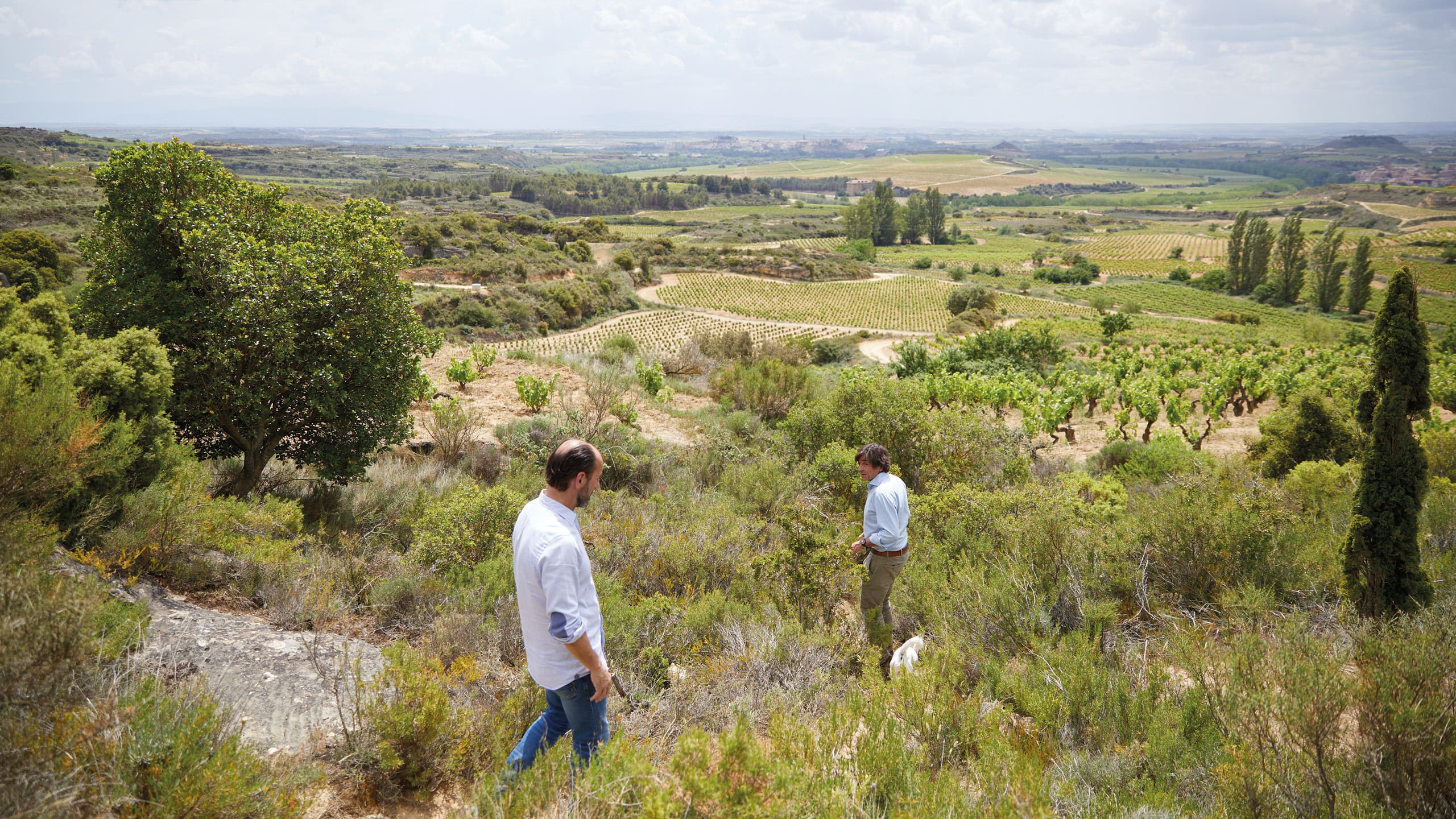
Photography ©Helen Cathcart
We recommend
WINE TRAILS SPAIN: LA RIOJA
Few tourists visit the Spanish wine region, yet it makes for a unique holiday location, says Mike MacEacheran, who follows the Ebro Valley to find peace among the vineyards and wineries of historic La Rioja
RIOJA REBORN
A band of forward-thinking winemakers is breathing new life into the Spanish wine industry, with grand plans to celebrate local terroir and excellency, as Brett Davis investigates
UNDER THE TUSCAN SUN
Swiss transplant Barbara Widmer has put down strong roots at Brancaia in the Chianti hills, where she aims to create wines that are an original expression of the local terroir. Nargess Banks visits the estate
CHASING MAVERICKS
Trusting his instincts and with an inventive, rebel spirit, Silvio Jermann has been creating unique and cultish wines at his Friuli winery, as he tells Nargess Banks

